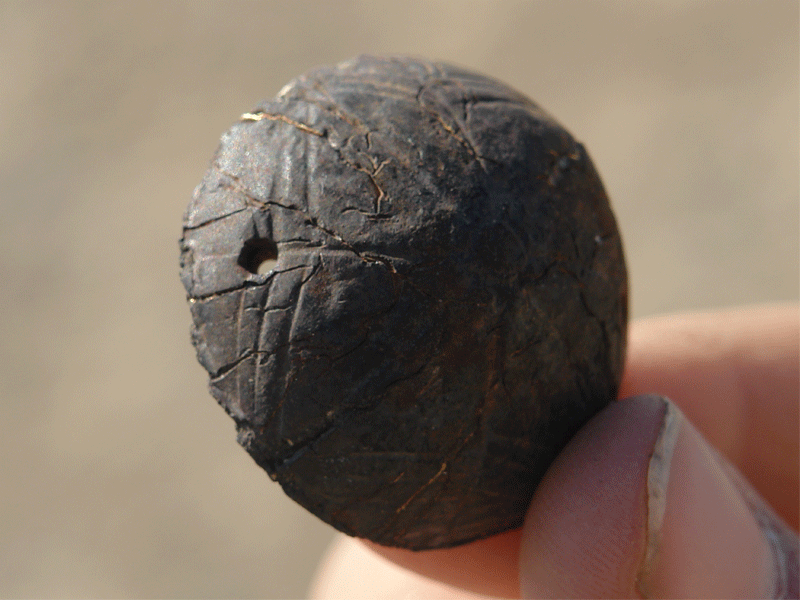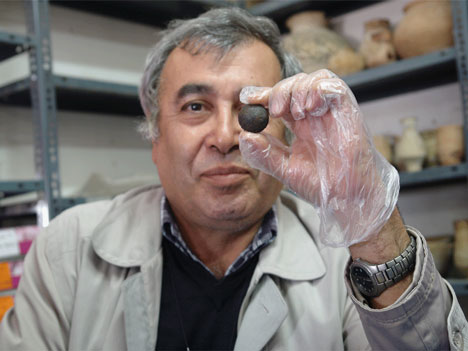The face of a 5000 year old Iranian woman has been recently reconstructed with the latest scientific archaeology methods of by Iranian researchers (see Persian-languiage article sourced from Tabnak News-see also English-language posting in Afarensis: Anthropology, Evolution & Science) .
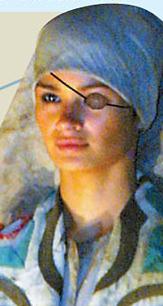
Reconstruction of 5000 year-old woman found at the “Burnt City”. Her face was reconstructed with the latest technology available to anthropologists, paleontologists and forensic experts. She is believed to have been of the ancient city’s upper crust and served as a priestess during her lifetime. The lady is also notable due to the artificial eye that was discovered, still lodged in the eye socket of her skull after thousands of years.
Maryam Tabeshian of the Cultural Heritage News Agency of Iran (December 10, 2006 had previously noted of researchers having excavated a 4,800-5000 year-old artificial eye along with a skeleton and other findings from the Burnt City (located near the city of Zahedan in Iran’s Seistan-Baluchistan province in the southeast of Iran).
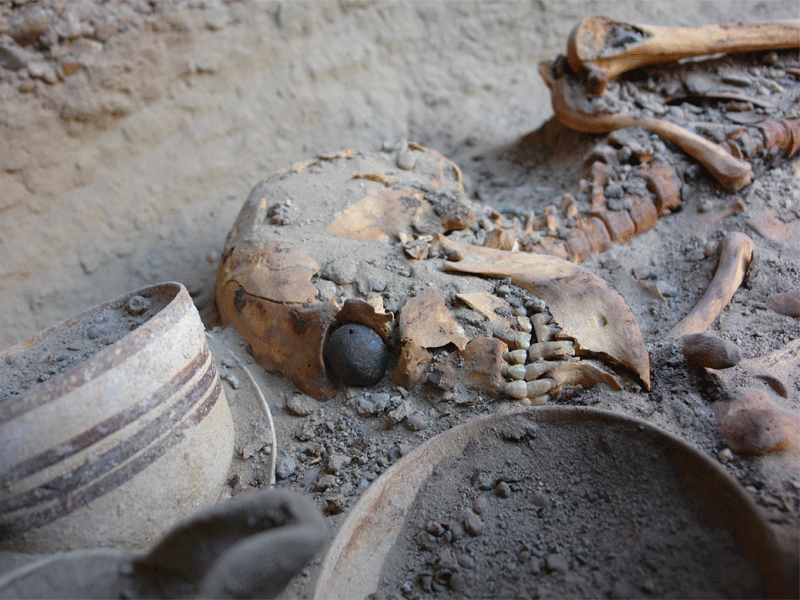
Skeleton of a young woman from the Burnt City. Note artificial eye in the eye socket of the skull.
The site of the Burnt City has also yielded numerous interesting finds including an ancient measuring ruler, backgammon game pieces and an animation device. Researchers have ascertained that the artifical eye belonged to a woman aged 25-30 who hailed from a higher echolon of the local society at the Burnt City.
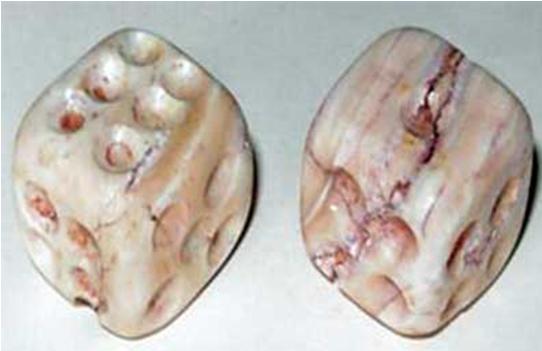
Ancient dices discovered at the Burnt-City. At present experts are (a) attempting to determine why the game was played with sixty pieces and (b) working to decode the rules of the game. Iranians call Backgammon “Takht-e Nard”.
Interestingly, the woman’s gravesite has also yielded vessels of clay, a leather bag, a mirror of bronze and various other ornaments. Professor Michael Harris, a specialist in the field of optometry at the University of California at Berkeley, has stated that:
“It’s unlikely such attention and effort would have been paid to a commoner…She may have been a member of a royal family or an otherwise wealthy individual.”
Prosthetics were of course known in the ancient era with references made to an artificial eye of gold in Hebrew texts (Yer. Ned. 41c; comp. Yer. Sanh. 13c). The prosthetic found in Iran however is different in that it is evidence of the oldest attempt at making this as “realistic” as possible. Professor Mansur Sayyed-Sajadi, who supervised the excavation, has stated:
“At first glance, it seems natural tar mixed with animal fat has been used in making
[the eye]…whoever made the eye likely used a fine golden wire, thinner than half a millimeter, to draw even the most delicate eye capillaries…”
A curious feature of the “eye” are parallel lines that have been drawn around the pupil to form a diamond shape.
Two holes at the sides of the “eye” helped hold it in iplace. The eye socket of the woman however appears to have developed an abscess as a result fo constant contact with the prosthetic.
Further tests are being conducted in iran to determine the exact chemical composition of the prosthetic.
==================================================================
Below is the original Persian-languiage article sourced from Tabnak News.
بازسازی چهره زن 5 هزار ساله ایرانی
چهره این زن ایرانی که 5 هزار سال پیش در شهر سوخته زندگی می کرده و صاحب قدیمی ترین چشم مصنوعی جهان است، در موزه ملی هنر شرقی در رم با حضور حمید بقایی، معاون رئیس جمهور و رئیس سازمان میراث فرهنگی کشورمان و سید محمد علی حسینی، سفیر ایران در ایتالیا، به نمایش درآمد. محققان ایرانی و ایتالیایی، چهره اسکلت کشف شده متعلق به یک زن را که در شهر باستانی سوخته در استان سیستان و بلوچستان ایران کشف شد، بازسازی کردند.به گزارش واحد مرکزی خبر از رم، چهره این زن ایرانی که 5 هزار سال پیش در شهر سوخته زندگی می کرده و صاحب قدیمی ترین چشم مصنوعی جهان است، در موزه ملی هنر شرقی در رم با حضور حمید بقایی، معاون رئیس جمهور و رئیس سازمان میراث فرهنگی کشورمان و سید محمد علی حسینی، سفیر ایران در ایتالیا، به نمایش درآمد.بقایی دراین باره به خبرنگار واحد مرکزی خبر گفت: این یکی از بزرگترین دستاوردهای علمی است که نشان می دهد ایرانیان در 5 هزار سال پیش، از تکنیک های مختلف پزشکی استفاده می کرده اند، منجمله ساخت یک چشم مصنوعی برای یک زن 30 ساله ایرانی که برای تزئین آن از مفتول های طلا به قطر نصف موی سر انسان به جای مویرگ ها استفاده شده است.پروفسور لورنزوکوستانتینی، رییس آزمایشگاه بیو باستان شناسی موزه ملی هنر شرقی رم ومجری این طرح نیز با بیان اینکه بازسازی چهره صاحب قدیمی ترین چشم مصنوعی جهان با استفاده ازجدیدترین علوم جنایی و پردازش های رایانه ای تحقق یافته، گفت : بازسازی چهره این زن ایرانی که اسکلت وی در کاوشهای باستان شناسی شهر سوخته کشف شده، حاصل کار مشترک محققان ایرانی و ایتالیایی است و بدون همکاری کارشناسان ایرانی تحقق این طرح امکان پذیر نبود.کوستانتینی گفت: دکتر سید منصور سجادی سرپرست هیات باستانشناسی شهر سوخته ومرکز فوق تخصصی چشم پزشکی نور در ایران سهم بسزایی را در تحقق این طرح بر عهده دارند

